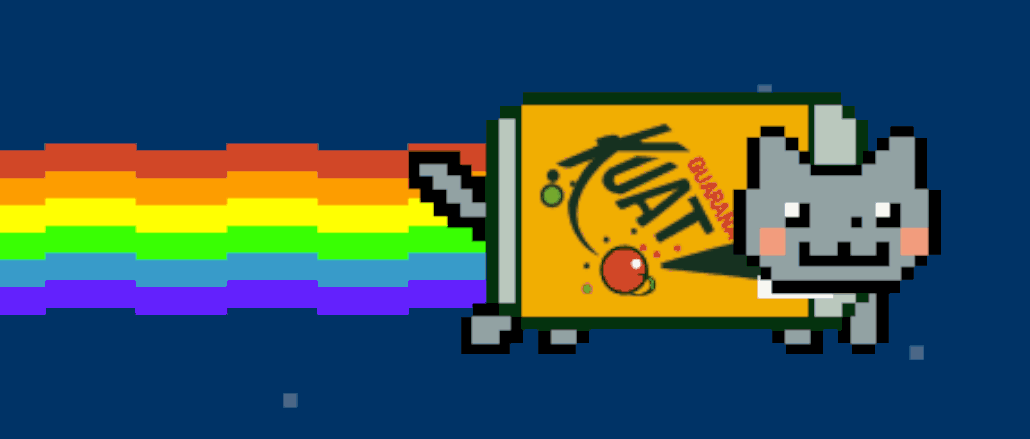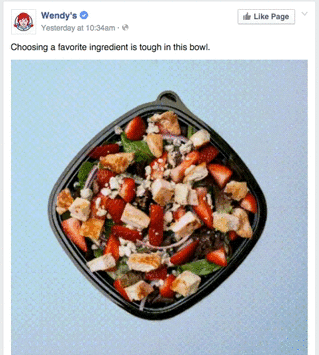
If autoplay video ads weren’t getting your attention, then these infinitely looping GIFs should do the trick.
Facebook is rolling out GIF support to brand pages, with Wendy’s and Coca-Cola-owned soda company Kuat being the first two try out the dizzying new post formats.
Only a “small percentage” of brand pages are part of the experiment and are being judged to see if it “drives a great experience” for its users, a Facebook representative told TechCrunch.
Of the two GIFs, Wendy’s looks more on-brand. It shows one of its salads being assembled with the caption “choosing a favorite ingredient is tough in this bowl.” None of the commenters seemed to be bothered by the hyperactive GIF with lots of people being attracted to the bacon and calling it “yummy.”
The post, seen below, racked up 4,700 likes and 110 shares in a day.
Brandon Rhoten, VP of Advertising for Wendy’s told Digiday that using GIFs “is a great opportunity for us to speak to our audience in the same language.”
Still, Wendy’s is proceeding cautiously since because they don’t want to be a “jerk” by filling people’s News Feeds with the constantly moving pictures. “Annoying people in their social feed, which this sort of thing has the potential to do, isn’t something we’re interested in,” he said.

Then there’s Brazilian beverage Kuat. The brand just superimposed one of its cans onto Nyan cat’s flying body and called it a day. “Welcome to the joke. Welcome to the Internet. Welcome to kuat,” it says (according to Google translate) in a very accurate caption of what the World Wide Web encompasses. The post garnered 18,000 likes, 600 shares and dozens of smiley emojis in the comments.
Initially resistant to GIFs, the social network is finally joining the ranks of Twitter, Tumblr and Imgur of permitting brands to use them. It only started allowing users to posts GIFs in May, so it’s not that surprising how cautious its being with brands.
More in Media

From sidelines to spotlight: Esports events are putting creators center stage
Esports events’ embrace of content creators reflects advertisers’ changing priorities across both gaming and the wider culture. In the past, marketers viewed esports as one of the best ways to reach gamers. In 2025, brands are instead prioritizing creators in their outreach to audiences across demographics and interest areas, including gaming.

Condé Nast and Hearst strike Amazon AI licensing deals for Rufus
Condé Nast and Hearst have joined the New York Times in signing a licensing deal with Amazon for its AI-powered shopping assistant Rufus.

Media Briefing: AI payouts may be entering a new era
AI compensation is evolving — and new models, not just publisher demands, are driving the shift beyond flat-fee licensing.





